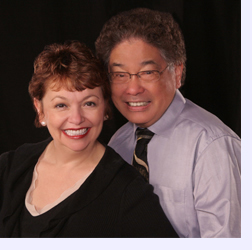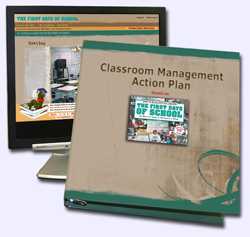|
 |

Special to the Gazette
October 2013
How to Start Class Every Day Making Your Students Feel Seen Greeting students will have the most immediate impact on your day or each class period. A sincere greeting establishes a positive climate for the classroom. You experience greeting people in daily life. You are greeted when you visit someone’s home or business, board an airplane, enter a place of worship, or just see a friend. A greeting is the first step in making a connection. In the business world, the importance of a greeting is understood. It positively effects the actions of those greeted. When you walk into a restaurant, you are immediately greeted by a confident, smiling host or hostess. The way you are greeted is a large factor in the art of hospitality, which is how restaurants make their profit. Many restaurants spend much time training their staff on this very topic. A good host will make you feel welcomed, at ease, and taken care of with a smile and few simple words. Within your first few seconds in the restaurant, you are in a relaxed and pleasant mood. Your wait person welcomes you and takes care of your needs. Your perception of this greeting will largely influence the amount of your tip. Even if the kitchen botches your order, if you perceive that your wait person was a “nice” person, your tip will still be generous. It makes sense that greetings would apply in your classroom. Welcome your students every day. Honor and acknowledge their presence from the moment they step through the door. It Begins at the Door 
At many schools and in many classrooms, discipline is not a factor, bullying does not exist, and more importantly, students are on task and doing their classroom work. It all begins at the door, the perfect way to start a class. This is the doorway of Karen Rogers, a high school teacher in Olathe, Kansas. Notice how her doorway message greets the students before they even enter the classroom. Greeter Leaders 
At the Staten Island School of Civic Leadership (SISCL) in New York, when the K-2 students reach their classroom door, they find a teacher and a student waiting to greet them. The students are greeted by a classmate and their teacher each day. Loreta Anderson, one of the kindergarten teachers, explains that at the beginning of every school year, the primary teachers look for students who would like to be “Greeter Leaders” for the month. This responsibility works well with the school’s civic leadership culture. The teachers model the “greeter leader procedure” for the children. They teach the procedure with the teacher shaking hands with the greeter leaders and welcoming them to school. The children then demonstrate the procedure back to the teacher, so that they can check for understanding and tweaking during the first days of school. Then, they guide two students to stand by the classroom door and offer their right hand to shake the hand of each classmate while saying, “Good Morning,” as the classmates enter the classroom. The student being greeted responds, “Good Morning,” in return. This routine is established early and continues throughout the school year with new “greeter leaders” rotating each week or month. This is done to validate students' abilities to succeed as leaders. Since this procedure is carried on each successive school year, the children develop a sense of continuity within a consistent environment. The Research Behind Greeting R. Allan Allday, University of Kentucky, did two studies (reported in Journal of Applied Behavior Analysis, 2007 and 2011) based on the door greeter technique he read about in The First Days of School:
In both studies, observers clocked a select group of students over a period of time in a class period to see if they were on task or off task. In the classroom where the teacher greeted the students at the door, there was an increase in student engagement from 45 percent to 72 percent. This was recorded when the students worked on the assignment and presented no discipline problems. In the second study, students got on task faster when they were greeted at the door, in comparison to the control class that was not greeted. Allan says that in the classroom management class he teaches at the university, his primary focus is on changing teacher behavior, because teacher behavior (the hardest behavior to change in a classroom) impacts student behavior. The Belief to Succeed 
Brockton High School has 4,200 students and is the largest high school in Massachusetts and one of the largest in the nation. The campus has nine buildings and is the size of an aircraft carrier, yet the students feel comfortable at this high school because they are welcomed each morning. Susan Szachowicz, the principal, together with a teacher, greet the students each morning as they come through one of the four entrances to the school. She has been doing this every day for years and has watched the school, declared by the Boston Globe as one of the worst performing academic high schools with a 33 percent dropout rate, transform into a nationally-celebrated high school with a graduation rate of 97 percent. At one time, Brockton had a culture that believed that every student had a right to fail, and fail they did. Today, there is a culture of consistency that says every student has a right to succeed. And, that message is delivered to the students each day they walk through the doors of the school and are greeted. Every Classroom, Every Year At A. B. Combs School in Raleigh, North Carolina, a student, along with the teacher, greet each other at the door. Once a week, a different student is selected to be the greeter, and they are all taught how to greet, how to shake hands, and how to respond. At A. B. Combs, there is a culture of consistency, as greeting each other is practiced in every classroom every day, year after year. 

A. B. Combs was once the lowest performing school in the district. Today, it is known for academic excellence and personal leadership. And it begins with welcoming students every day in every classroom. Welcome to Your Future What happens if your school does not have a culture of consistency? Then you create your own culture in your classroom. 
Darrell Cluck is a middle school teacher in Monroe, Louisiana, who welcomes each of his students to class by saying, “Welcome to our class. Welcome to your future.” He also has student door greeters on a rotating basis. You do not see behavior problems in his classroom. Rather, you see happy, friendly, smiling students who know they are in a safe class where they can interact and learn together in an atmosphere of respect. Your Impact There is an old Jewish dictum that says:
There are students who must leave home without breakfast, who tolerate family discord, traverse past neighborhood gangs, endure bullying on the sidewalk or on the bus, and enter school through metal detectors. Are you the teacher who barely makes it to school on time and scrambles to organize yourself and your lessons while the students are left staring and waiting and waiting for you to begin the class? Your frenzy has just set the tone for what is to follow. Or, are you the teacher who is organized and ready with activities and lessons to engage the students in learning the moment they enter the classroom, who is a model of caring, calm, and stability as you welcome students into the class? Your constancy has just set the tone for what is to follow. You may be the first stable adult your students will have at this point in their journey. THE Classroom Management Book Practical, easy–to-implement ideas from over 100 teachers are showcased, so you can be effective overnight. Learn how to teach procedures for Opening Assignments, Missing Assignments, Bathroom Breaks, Finishing Work Early, Reading a Textbook, Classroom Transitions, Dismissal, Classroom Visitors, The Death of a Student, and many, many more. There are procedures for Elementary and Secondary classrooms and Special Education classrooms. Take advantage of our exclusive pre-publication price offered only to those who sign up to be notified. Email CustomerService@HarryWong.com and put “CMB Notice” in the subject line to be placed on our list. THE Classroom Management Book will be your beacon for a more effective tomorrow!
|
|||||||||||||||
|








